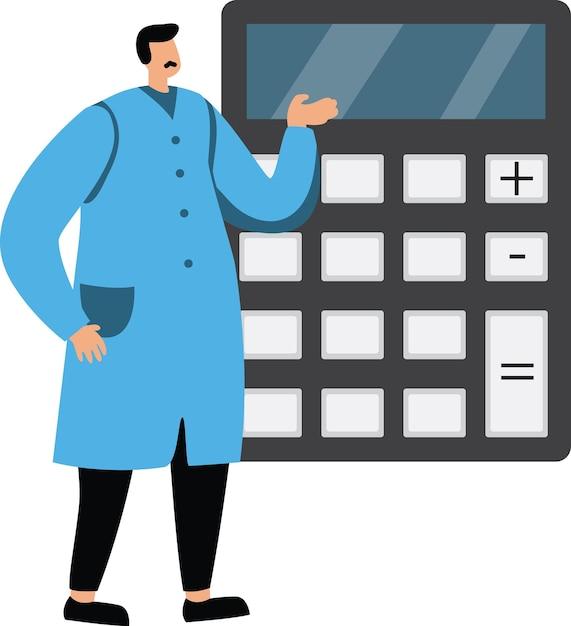Money supply plays a crucial role in the economy as it affects inflation, interest rates, and overall economic stability. But have you ever wondered how economists calculate the money supply? In this blog post, we will explore the concept of money supply and delve into the fascinating world of the money multiplier.
What is Money Supply?
Money supply, simply put, refers to the total amount of money available in an economy at a given time. It includes both physical currency and demand deposits held by individuals and businesses. Understanding how to calculate money supply is crucial for policymakers and economists when making decisions that impact the economy.
How is Money Supply Calculated?
Calculating the money supply involves determining the money multiplier, which measures the impact of a change in the monetary base (currency in circulation and reserves held by banks) on the overall money supply. Determining the money multiplier involves considering various factors such as the legal reserve ratio (LRR) and the credit multiplier.
In this blog post, we will uncover the relationship between LRR and the money multiplier, explore the different types of multipliers, and learn how the money multiplier works. We will also dive into formulas and calculations for determining the money supply and discuss the difference between the credit multiplier and the money multiplier.
So, let’s delve into the intricacies of calculating money supply and gain a deeper understanding of the mechanisms that underpin our economic system.

How to Calculate Money Supply
Money supply is the total amount of money circulating in an economy at a given time. As an aspiring economist or curious individual, you may find yourself wondering, “How do you calculate money supply?” Well, fear not! In this section, we will dive deep into the methods used to calculate money supply and shed some light on this fascinating topic.
Narrow Measures of Money Supply
M1
Let’s start with the narrowest measure of money supply called M1. This includes physical currency, such as coins and bills, along with checking account deposits and traveler’s checks. To calculate M1, add up the value of all physical currency in circulation, the total amount held in checking accounts, and any traveler’s checks.
M0
Now, let’s take a step even closer! M0, the narrowest measure of money supply, represents physical currency in circulation, including coins and notes issued by the central bank. Calculating M0 simply involves adding up the value of all physical currency currently in circulation.
Broad Measures of Money Supply
M2
Moving on to a broader measure, we have M2. This includes everything in M1 but adds additional components to capture a more comprehensive view of the money supply. In addition to physical currency and checking account deposits, M2 also includes savings accounts, money market accounts, and other time deposits.
To calculate M2, sum up the value of currency in circulation, checking account deposits, savings account balances, money market account balances, and any time deposits.
M3
If you’re still craving more, let’s explore the broadest measure of money supply, M3. M3 includes everything in M2 and goes a step further to include longer-term and larger-denomination deposits. These deposits may not be as easily accessible as other forms of money, but they still contribute to the overall money supply.
To calculate M3, add up the value of currency in circulation, checking account deposits, savings account balances, money market account balances, time deposits, and other larger-denomination deposits.
Adjusting Money Supply for Seasonality
It’s important to note that the calculated money supply can fluctuate due to various factors, including seasonality. For instance, during the holiday season, people tend to withdraw more cash from their accounts for shopping and gift-giving. As a result, the money supply may increase temporarily.
So, now you know how to calculate money supply! Whether you’re interested in the narrow measures like M0 and M1 or want to grasp a broader perspective with M2 and M3, understanding money supply is crucial for comprehending the overall health and dynamics of an economy. So go ahead, crunch those numbers, and become the money supply expert you were destined to be!

FAQ: How do you calculate money supply
What is the current money multiplier
The current money multiplier refers to the ratio of the money supply to the monetary base. As of 2023, the specific value of the money multiplier varies over time, depending on the monetary policies implemented by the central bank.
What are the types of multiplier
There are two types of multipliers: the simple money multiplier and the credit multiplier. The simple money multiplier is based on the reserve ratio, while the credit multiplier includes the influence of loans created by banks.
What is the relation between LRR and money multiplier
The legal reserve ratio (LRR) plays a vital role in determining the money multiplier. The money multiplier is the reciprocal of the reserve ratio, so as the LRR decreases, the money multiplier increases, resulting in an expansion of the money supply.
What is the value of money multiplier if the legal reserve ratio is 25%
To calculate the money multiplier when the legal reserve ratio (LRR) is 25%, we can use the formula:
Money Multiplier = 1 / Reserve Ratio
In this case, the money multiplier will be 1 / 0.25, which equals 4.
What is the required reserve ratio formula
The required reserve ratio, often referred to as the reserve ratio or the legal reserve ratio (LRR), is set by the central bank. It is calculated using the formula:
Required Reserve Ratio = Required Reserves / Total Deposits
How do you calculate money supply
To calculate the money supply, you need to multiply the monetary base (MB) by the money multiplier (MM):
Money Supply = Monetary Base * Money Multiplier
Is the credit multiplier the same as the money multiplier
No, the credit multiplier and the money multiplier are not the same. The credit multiplier considers the additional loans created by banks, while the money multiplier focuses on the reserve ratio’s impact on the money supply.
How does the money multiplier work
The money multiplier works by determining the potential increase in the money supply based on changes in the legal reserve ratio (LRR). When the LRR decreases, banks are able to lend out more money, leading to a multiplied expansion of the money supply.
What is the simple money multiplier formula
The simple money multiplier can be calculated using the formula:
Simple Money Multiplier = 1 / Reserve Ratio
What is meant by CRR
CRR stands for the Cash Reserve Ratio. It is the mandatory amount of cash that banks need to have in reserve with the central bank. The CRR is used to control the money supply and liquidity in the economy.
What is M1, M2, and M3 money
M1, M2, and M3 are different measures of the money supply. M1 includes currency, demand deposits, and traveler’s checks. M2 includes M1 plus savings accounts, time deposits, and money market accounts. M3 encompasses M2 plus large-denomination time deposits and institutional money market funds.
What is the formula for calculating the money multiplier
The formula for calculating the money multiplier is:
Money Multiplier = 1 / Reserve Ratio
What is the other name for the money multiplier
The money multiplier is also referred to as the deposit multiplier or the money creation multiplier. It showcases the relationship between changes in the monetary base and the resulting expansion of the money supply.
Remember, understanding how money supply is calculated is crucial for comprehending the dynamics of the economy. Whether you’re interested in economics or just want to impress your friends with your financial knowledge, mastering the concept of the money multiplier will undoubtedly give you an extra boost in your understanding. So, why not dive into the fascinating world of monetary systems and expand your financial horizons? Happy calculating!
